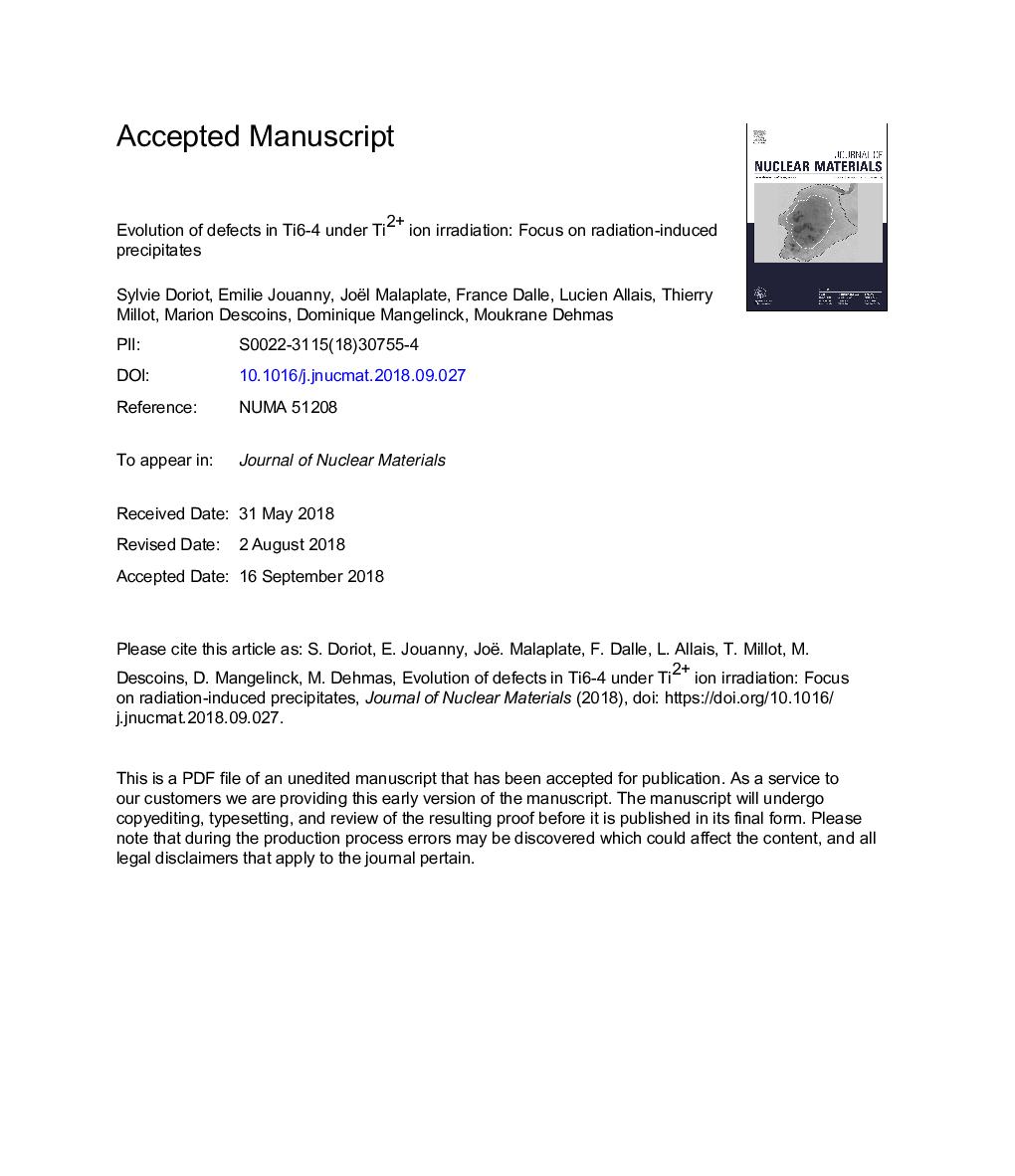| Article ID | Journal | Published Year | Pages | File Type |
|---|---|---|---|---|
| 10645160 | Journal of Nuclear Materials | 2018 | 45 Pages |
Abstract
Ion irradiations on the Ti6-4 titanium alloy were conducted at the JANNUS French platform in two different conditions of temperatures, doses and fluxes, to simulate neutron irradiation damage. Quantification of defects and chemical microanalyses were carried out thanks to Transmission Electron Microscopy and Atom Probe Tomography. -type loops and radiation induced precipitates (a vanadium-rich β BCC phase) were observed for both irradiation temperatures. During an irradiation at 300â¯Â°C, there was no notable influence of the dose and flux for the considered doses and fluxes ranges on the -type defects. The influence of raising the irradiation temperature up to 430â¯Â°C was a lowering of their density and an increase of their mean diameter for both defects. In addition, a lower flux seemed to enhance this temperature effect. These phenomena were very significant for precipitates whereas it appeared very modest for -type loops. The probable mechanism to explain the distribution of vanadium-rich β precipitates inside the α phase is the heterogeneous nucleation. The nucleation is dominated by the Radiation Induced Segregation (RIS) phenomenon at 430â¯Â°C and could be dominated by the mechanism of vanadium-rich clusters formation by ballistic effects in the cascades at 300â¯Â°C.
Keywords
Related Topics
Physical Sciences and Engineering
Energy
Nuclear Energy and Engineering
Authors
Sylvie Doriot, Emilie Jouanny, Joël Malaplate, France Dalle, Lucien Allais, Thierry Millot, Marion Descoins, Dominique Mangelinck, Moukrane Dehmas,
